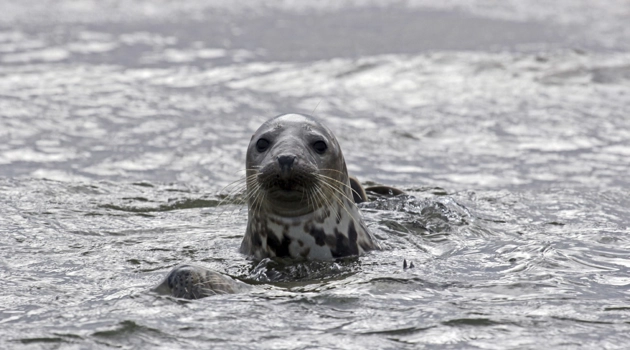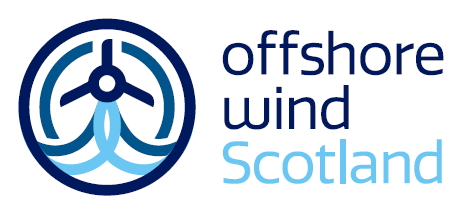
Measures that provide habitat for shelter, feeding and spawning can be incorporated within wind turbine foundation options to help enhance biodiversity in the decade ahead as multiple wind farms are constructed in Scotland’s seas.
Supported by SOWEC, the Collaboration for Environmental Mitigation & Nature Inclusive Design (CEMNID) project, a collaboration between offshore wind developers and Scottish regulators, has produced a new set of tools for the sector including a ‘Good Practice Mitigation Library’ and a suitability review of Nature Inclusive Design measures. These offer a practical framework for the offshore wind sector to deliver projects with minimal impact and to benefit the marine environment.
Launched during National Marine Week 2024, the project is a response to the twin climate and biodiversity crises facing Scotland’s seas, and addresses a key uncertainty faced by offshore wind sector as it tries to speed up the consenting of projects.
The report recommends further investigation and trials of the most promising nature-inclusive measures, and for developers to consider them at the early design stages of offshore wind projects. The measures, which all aim to increase opportunities for shelter and settlement of a variety of different species, include:
- Fish hotels
- Adaptable rock protection measures
- Reef-type structures
- Mattresses for cable protection
- Water replenishment holes (enabling water flow through monopiles)
Current mitigation measures for seabird colonies including adjusting turbine layouts in response to observed bird behaviours and increasing the ‘air gap’ between blades and the sea are highlighted as examples of best practice for future Scottish projects. The report also identifies the selection of infrastructure and vessel lighting and cable burial decisions as helping to minimise potential effects on ecological features.
The recommendations set out practical tools and next steps for the sustainable development of offshore wind in Scotland. Now published, SOWEC members will be able to draw on this informed approach to integrate a nature-inclusive design process into offshore wind planning and policy.
Duncan Smart, senior planning & environmental policy manager at ScottishPower Renewables and chair, CEMNID Project Steering Group, commented:
“Offshore wind will be the backbone of our clean energy future, but we also have to ensure it works for nature too. We’re really excited by the outcomes of this year-long collaborative project which provides practical outputs to support the sustainable development of offshore wind as well as recommendations to steer policy development.
“By working to address key environmental uncertainties which pose a barrier to consenting and deployment, we’re moving closer to delivering a clear planning framework for offshore wind. Having such a framework is essential to underpin market confidence and vital for developers to take strategic decisions in a timely manner to unlock supply chain investment and deliver economic growth. “The strong collaboration fostered through this project has been great to see as it is only by tackling shared challenges together that we will be able to maximise the success of offshore wind deployment”.
Karen Taylor, marine sustainability manager, NatureScot, and member of the project steering group added:
“This project is an extremely valuable tool to help design offshore wind projects in a way that will benefit nature. We hope this work, together with the review of good practice mitigation, will support and encourage the offshore wind industry across Scotland to help tackle the climate and the biodiversity emergencies.”
Download the full CEMNID report.
Supplementary documents:
Download CEMNID - Mitigation Measures Efficacy Review, 30 page PDF, 483kb
Download CEMNID - Mitigation Measures Literature Review, 104 page PDF, 1044kb
Download CEMNID - NID Literature Review, 53 page PDF, 1866kb
Download CEMNID - NID Suitability Review, 39 page PDF, 2364kb
Please email Ben Miller for access to the mitigation library.
Xodus are a global consultancy working across the energy industry.
The Rich North Sea are a Dutch initiative focusing on underwater nature enhancement in offshore windfarms.
Related Articles
SOWEC appoints two new subgroup chairs to drive forward offshore wind
The Scottish Offshore Wind Energy Council has appointed two senior industry figures to lead key strands of its work to drive progress in the offshore wind sector.
SOWEC Skills group seeks next generation of talent at careers fairs
SOWEC’s Skills group provides insights into the paths available in Scotland’s offshore wind sector at recent university careers fairs
SOWEC welcomes the Floating Offshore Wind Taskforce 2050 vision
The Scottish Offshore Wind Energy Council welcomes the new report highlighting the potential for UK floating offshore wind to become a global success
SOWEC champions offshore wind at the heart of Scotland’s green industrial revolution
SOWEC welcomes its central role as a vital platform for engagement between industry and public sector.
Seaway7’s Lloyd Duthie appointed as head of Supply Chain and Clusters sub-group
"My priority is to unify the current supply chain clusters into a single, focussed cluster to help the Scottish offshore wind supply chain."
Technology accelerator programme opens for Scottish companies targeting offshore wind success
Applications are now open for Offshore Renewable Energy (ORE) Catapult’s award-winning Launch Academy
Sumitomo Electric cable factory ground breaking ceremony
Sumitomo Electric kick starts construction on its £350m cable factory with a traditional Japanese ceremony
Haventus secures £100 million credit facility from Scottish National Investment Bank and UK Infrastructure Bank
Ardersier Port secures £100 million credit facility from SNIB and UKIB
Green Volt, largest commercial floating wind farm, receives planning consent
Flotation Energy and Vargonn secure planning consent for their Green Volt INTOG leasing round project

